Editor's note: As part of National Parks Traveler's Centennial Series, Jeffrey Bilbro, an assistant professor of English and Director of the Writing Center at Spring Arbor University, traces the literary origins of the romantic, spiritualized view of nature that contributed to the formation of America’s National Parks.
This summer the National Park Service turns one hundred years old, and many Americans—including the presidential family—are taking summer vacations to enjoy what Wallace Stegner called America’s “best idea.” In order to better appreciate what makes our National Parks so valuable, these vacationers might want to bring along the latest book by one of Stegner’s students, Wendell Berry.
A Small Porch is an unusual book; the first half contains poems, while the second half consists of a long essay on how poets and farmers have imagined the persona of Nature over the past one thousand years. These two sections complement each other, offering a nuanced vision of “Dame Nature” as a spiritual, cultural, and economic guide. While the National Parks can unfortunately reinforce a sentimental view of wilderness, permitting visitors to simply consume its scenery as tourists, Berry’s poetry and essay remind us that as members of the natural world we have a more complex responsibility, one that requires humans to be Nature’s “student[s] and collaborator[s].”
When President Obama traveled to Yosemite National Park earlier this year to honor the National Park Service Centennial, he spoke for a longstanding American tradition when he cast the Parks’ significance in religious terms. Speaking in front of Yosemite Falls, he gestured around him and said, “There’s something sacred about this place. And I suppose that’s why the walls of this valley were referred to as cathedral walls.”

Yosemite is not the only National Park that has been referred to as a cathedral, and Ian Frazier, writing in a special issue of Outside Magazine commemorating the Parks, criticizes this metaphor because it reinforces a problematic view of wilderness areas: “For the metaphor to work, the MOC (magnificent outdoor cathedral) must be empty of human beings, except of course for the observer. And the MOC must draw the eye upward, to the requisite ecclesiastical sunbeams. . . . In fact, the metaphor rules out most of the planet.” The danger that Frazier rightly points out is that calling our National Parks “cathedrals” and imagining them as sacred places can lead us to value only those parts of nature that are awe-inspiring and are uninhabited.
One of the more ugly moments in National Park history demonstrates this tendency; when the Great Smoky Mountains National Park was established, “thousands of residents of Western North Carolina were forced to leave their farms, churches, schools, barns and homes. Some families had hardly departed from their land when park officials torched their former houses and possessions in an attempt to erase the traces of humankind from the new park.” From my own experience spending time in Stehekin, Washington, a small community which is nestled at the edge of North Cascades National Park, it’s clear that the National Park Service often operates according to the belief that humans don’t belong in the wilderness.

In the lengthy essay that comprises the second half of A Small Porch, Wendell Berry criticizes the romantic and industrial paradigm that lies behind this view of wilderness. As he puts it in his typically blunt manner: “Industrial conservationists ignore everything but wilderness preservation (‘Give us the “wild” land; do as you please with the rest’) and the most sensational and fashionable ‘environmental disasters.’”
He locates the origins of this view in the poetry of the Romantics, particularly Wordsworth: “Wordsworth laid out pretty fully the model of industrial-age conservation, which reduces too readily to the effort to preserve ‘wilderness’ and ‘the wild,’ in certain favored places, as if to compensate or forget the ongoing industrial devastation of other landscapes.” When we succumb to this romantic way of imagining nature, we “establis[h] and ratif[y] a division, even a hostility between nature and our economic life that is both utterly false and limitlessly destructive of the world that [we] are intent upon ‘saving.’”
Wilderness, in the romantic view, can be sacred and cathedral-like, but it makes no demands on our lives. The result, according to Berry, is that “Nature is understood merely as the purveyor of a sort of consolation or what we now call ‘mental health.’” President Obama gave voice to this perspective when he claimed, “Studies have shown now that just five minutes of time in a green, open space brings your stress levels down. It makes your heartbeat go down. It makes your whole body feel better. Makes your spirit stronger and cleaner.” I don’t mean to pick on President Obama, who has worked both to expand public, protected lands and to shift our economy in more sustainable directions, but this justification of nature is purely therapeutic. Wilderness is another commodity; it is good because it makes me feel better.
Given the abuses that such a therapeutic spiritualizing of Nature can lead to, Ian Frazier tells National Park visitors to stop imagining wilderness as sacred and try to simply encounter it, without immediately collapsing its complexities into the predetermined “magnificent outdoor cathedral” intellectual box. As he concludes, “This benign vagueness seems the best approach to me.” But “benign vagueness” about the meaning and authority of Nature isn’t much more likely than the MOC label to shape responsible participation in natural economies. Rather than denying the religious significance of nature, then, Berry insists that we need to recover a more complex understanding of Nature, one that includes a sense of her religious, economic, and cultural authority.
Beginning with Alan of Lille in the 12th century, Berry looks at various poetic portrayals of Nature as a character, whether Mother Nature, Vicar or Vice-regent of God, or Dame Nature. Through poets such as Chaucer, Spenser, Milton, and even Gary Snyder, Berry traces “a living tradition of deference, respect and responsibility to Nature and her laws.” Nature, in this tradition, is a multifaceted persona whose authority derives from her position between God and humans: Nature is “a being accessible to imagination, linking Heaven and Earth, making and informing the incarnate creation, and requiring of humanity an obedience at once worshipful, ethical, and economic.” This Nature thus unites religion and economics, and it is this tradition that Berry’s essay—and his poetry—works to recover.
Central to this tradition is a respect for the fertility cycle, or what the agrarian scientist Albert Howard calls the Wheel of Life. On the one hand, this is a biological cycle by which dead bodies are broken down and feed new lives. But poets and farmers have long seen this as an analogue to religious redemption. As Berry puts it, “the Wheel of Life is a principle of Nature, eventually of science, which has long been ‘natural’ to religion.”
This imaginative link between natural cycles and religious redemption is shared by many of the American authors whose work inspired the National Parks. Walt Whitman saw this miracle of redemption in a compost pile, which “gives such divine materials to men, and accepts such leavings from them at last.” Thoreau, near the conclusion of Walden, exclaims that on “a pleasant spring morning all men’s sins are forgiven” and “the vilest sinner may return.” And John Muir imagines the glaciers that shaped the dramatic peaks of the Sierra as “roll[ing] away the stones from these mountain sepulchers.” Natural, seasonal processes can bring beauty and life from death and destruction.
These writers don’t just describe awe-inspiring wild places in religious terms. Whitman, after all, was staring at a stinky compost heap when he rhapsodized about “divine materials.” And by finding religious meaning in the mundane processes through which the natural world renews itself, these writers bring the sacredness of Nature down from the majestic mountains and into the neighborhoods where we live and work. We don’t have to go to the wilderness to witness Nature’s sacred redemption.
In fact, we have an obligation to learn from and participate in these redemptive processes in our daily lives. The poets that Berry examines repeatedly instruct their readers to shun “the vices that break [Nature’s] laws and her world,” and to practice “the virtues by which her laws would be obeyed, her rule restored, and her work made whole.” Virtues such as temperance, fidelity, humility, and love guide us in “the proper use and care of natural gifts”; they are the means by which we sustain the Wheel of Life.
And Nature is a stern teacher. If we fail to learn her lessons and participate in her cycles of redemption, we will suffer, along with all those who share our places. The United States is big enough that we’ve been able to avoid Dame Nature’s sternest lessons by moving on from the places we’ve damaged. We’ve had enough space to designate some for destruction, some for preservation, and some for everyday living. But we’re being forced to learn that living under Nature’s authority isn’t as simple as setting aside some mountains for coal mining and others for scenic photos. Rather than extracting resources greedily and arrogantly, then, we’ll have to learn the virtues needed to fit our lives and work into a sustainable pattern.
In one of his poems, Berry beautifully portrays both the responsibility we have to adapt our work to Nature’s pattern as well as the sacred grace that he sees fulfilling our fallible efforts. The poem begins by placing human work under the authority of Nature: “The best of human work defers / always to the in-forming beauty / of Nature’s work.” While even the best of human work will fall short—it is “forever incomplete”—our efforts are redeemed by the Wheel of Life that the Creator sustains: “It is only the Christ-life / the life undying, given, / received, again given, / that completes our work.” Human work becomes sacred, then, when it is done in deference to the holy cycles by which death is made to serve life.
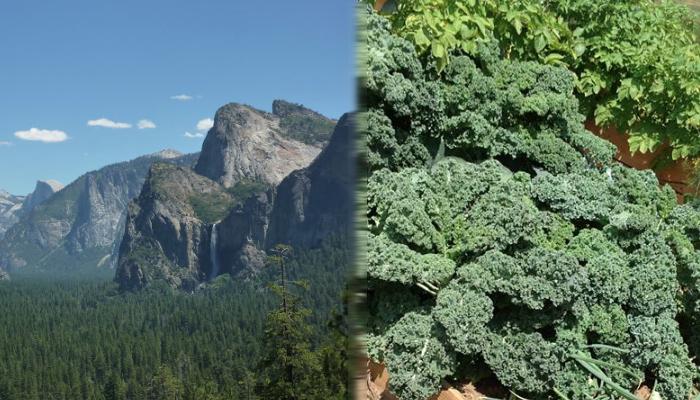
"There is something sacred about Yosemite, but there’s also something sacred about your garden." -- Jeff Bilbro
We have the opportunity—and the responsibility—to be Nature’s “student and collaborator” in sustaining these cycles. While the National Parks make excellent schools where we can learn from Nature, our education isn’t worth much if we don’t put what we learn into practice by collaborating with Nature when we return home. To do this, we first have to realize that the Parks don’t have a monopoly on the sacred. John Muir articulated this when he proclaimed in reference to the Sierra, “God’s glory is over all His works, written upon every field and sky, but here it is in larger letters—magnificent capitals.” Learning to read God’s glory in the magnificent capitals of Yosemite can train us to read it in the places we think of as more mundane.
Berry is the guide we need when we visit the National Parks because he insistently reminds us that humans are beholden to Nature, that we can’t just celebrate distant wilderness but also need to tend the health of the places we live. So by all means visit a National Park this summer and join in celebrating its centennial. But when you return home, let the wild beauty you experienced inspire you to fit the economy of your life to Nature’s patterns. There is something sacred about Yosemite, but there’s also something sacred about your garden.
Support for this essay was provided through the Issachar Fund Writer’s Retreat.


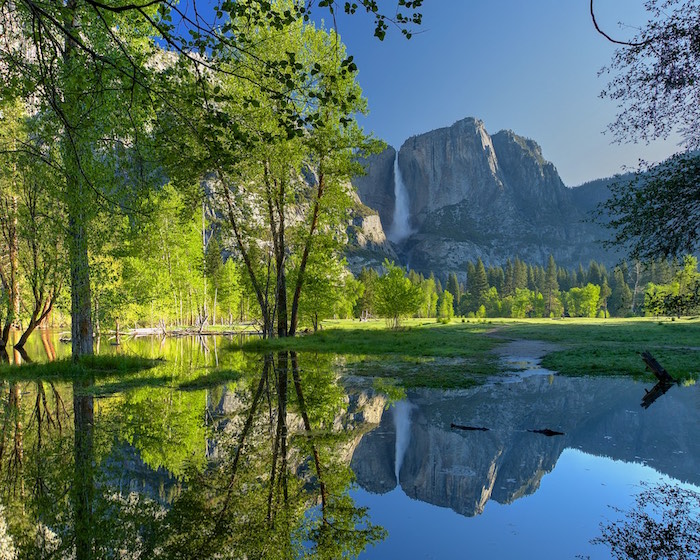
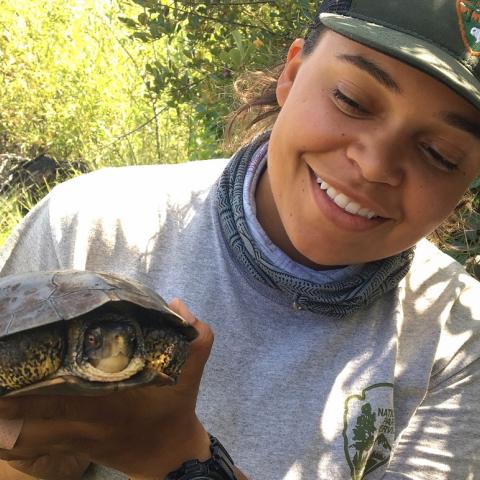
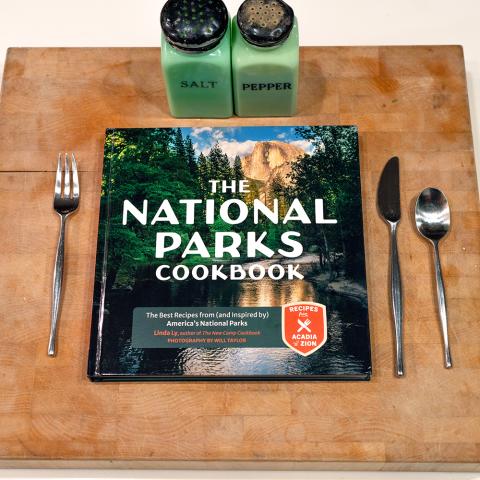
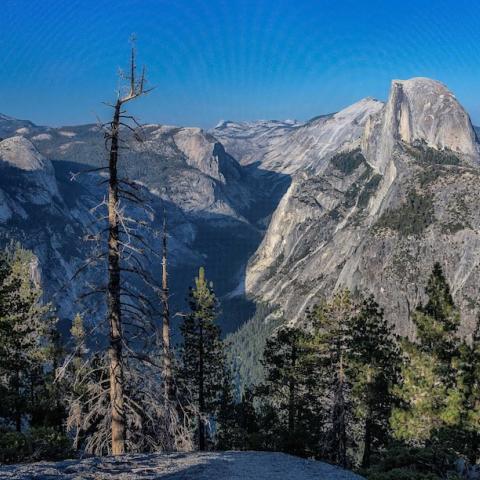
 Support Essential Coverage of Essential Places
Support Essential Coverage of Essential Places







Comments
I will add this book to my library on National Park Service books.
You defined Nature's authority as steming from serving as mediator between God and man, while constantly hinting it is man's responsibility to serve Nature by being responsible stewards. Modern Man characteristically acts like he is superior to Nature, but poets like Berry and Whitman insist on the "authority" of nature. In your opinion Dr. Bilbro, what ultimately is the authority that Nature has?